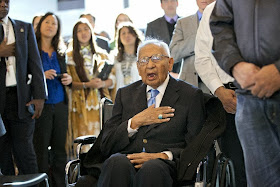The Right Thing To Do
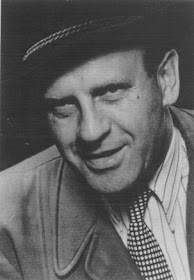 |
| Oskar Schindler. |
This is going to be a special page, about
heroes of World War II. We will review the stories of people who, for the most part, are forgotten. A few have had movies made about them, but most haven't. That doesn't matter when it comes to being a real-life hero.
A hero is someone who defies their fear to help others at their own personal risk. Usually, a hero winds up losing a lot, perhaps everything. They help others for no better reason than that it is the right thing to do. World War II was full of gun-swinging, torpedo-launching, button-pushing fearless types about whom books and treatises have been written. The gunslingers may have helped win (or lose, depending on what side they were on) the war, and that certainly is necessary for the whole war equation to work itself out. Those types of heroes will get their own page at some point.
Here, though, we look at the Unsung Heroes of World War II. One could say that anyone who died in the gas chambers was a hero, and they would be correct, but we have to keep this manageable. Many of the names of true heroes are lost and never will be known. A few of the names are known, though, and those are the ones we honor in the absence of all the rest. And, no, this page is not meant to be complete. This is a sampling, meant to show the diversity of heroes.
Not everyone would necessarily agree with every name on this page. So be it. The folks mentioned are in no particular order.
Oskar Schindler
 |
| Oskar Schindler. |
"I hated the brutality, the sadism, and the insanity of the Third Reich. I just couldn't stand by and see people destroyed. I did what I could, what I had to do, what my conscience told me I must do. That's all there is to it. Really, nothing more." - Oskar Schindler
Schindler was a German factory owner. He also was a member of the Abwehr, the German intelligence (spy) service. The Abwehr was full of people opposed to Hitlerism, and it was headed by Admiral Wilhelm Canaris, a committed opponent of the regime who himself was executed for that reason in April 1945. In contemporary German parlance, the Abwehr was "a nest of spies" for the Allies. Whether that had anything to do with Schindler ultimately opposing the destructive policies of Hitlerism is difficult to say, and may just be a coincidence.
Working for the Abwehr, Schindler helped with the invasions of Czechoslovakia and Poland, so he was no Saint. However, as the war went on, he became disenchanted with the extermination programs of the Third Reich. Bribing, wheeling and dealing, and generally risking getting shot every other day, Schindler managed to transfer his 1200 or so employees from the East to safety in the West during the closing days of the war. They all would have been executed otherwise.
Schindler had no business success at all after the war. Perhaps German customers did not wish to deal with this "traitor"? He survived only by the benefaction of the people he had saved. Although named Righteous Among the Nations by the Israeli government in 1963, Oskar Schindler died anonymously and in poverty in 1974.
Long after his death, Oskar Schindler had a successful movie made about him, so he is a big deal in the media because of that. That does not matter one way or the other in terms of inclusion on this list. He is a hero of World War II.
Witold Pilecki
 |
| Witold Pilecki. |
Let's move from the media hero to an unsung hero. Most heroes of World War II were quickly forgotten or never known, but they are no less deserving of recognition.
In September of 1940, Witold Pilecki (May 13, 1901 – May 25, 1948) was a Polish Resistance soldier who wanted to know the truth about Auschwitz. He volunteered to infiltrate the death camp, spending the next 2.5 years as a prisoner. On his escape, Pilecki smuggled details about the German methods of execution and interrogation and eventually authored the first WWII intelligence report on the concentration camp. Whether or not the authorities made proper use of that information, Pilecki got it for them in an incredibly sacrificial way.
It is pretty clear that Witold Pilecki was a stud. Thank you for your truth and justice work.
The White Rose
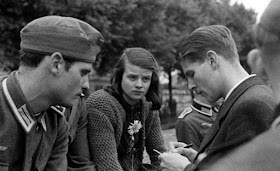 |
| Hans Scholl, his sister Sophie Scholl, and Christoph Probst. |
Hans Scholl, his sister Sophie Scholl, and Christoph Probst were ordinary students at the University of Munich during World War II when they became radicalized against the Hitler regime. This was due to lessons taught by their psychology and philosopher professor, Kurt Huber.
Along with other students, the three formed a resistance group called The White Rose. After Hans was drafted into the Wehrmacht, he saw the reality of the Eastern Front, including the abuse of Jewish slave labor. This helped to propel them to action. They began mailing anti-regime pamphlets to random people they found in the phone book and began leaving their materials in phone booths. This evolved into writing graffiti such as “Freedom!” and “Hitler the Mass Murderer!” on the university walls.
Inevitably, the Gestapo caught Hans and Sophie in the act of distributing their literature. Taken before the notorious "People's Court" headed by Roland Freisler, they and Probst were swiftly convicted of high treason. As was customary, the decision on the morning of 22 February 1943 was followed by swift execution by guillotine in the afternoon. Eventually, the Gestapo got around to Huber and others in the group, including Alexander Schmorell (later canonized as a Saint by the Russian Orthodox Church), and executed them, too. The White Rose is remembered as one of the few active resistance groups in the Third Reich.
Admiral Canaris
 |
| Admiral Wilhelm Canaris, executed in a concentration camp for opposing Hitler |
Admiral Canaris was the top man in the German Naval Intelligence service, the Abwehr. He was good friends with and the mentor of a notorious German leader, Reinhard Heydrich, who lived in the same suburb of Berlin. Canaris became involved with the opposition to Hitler and was imprisoned in Dachau. He was executed there during the last days of the war, in April 1945.
Bronka Klibanski
 |
| Bronka Klibanski. |
Bronka Klibanski was a member of the Jewish resistance. She obtained critical weapons for the Bialystok ghetto revolt, gathered intelligence, rescued other Jews and saved the secret archive of the ghetto. After the Bialystok ghetto was destroyed, she continued her work against the regime. She worked with five other young women to continue rescuing and helping Jews. The women also smuggled weapons, supplies, and medicine to the partisans in the forests near Bialystok. Completely forgotten today, Bronka, along with the other women, ultimately was awarded the Supreme Medal of Heroine of the USSR, which carried a lifetime pension and numerous other benefits.
 |
| Mrs. Mary Couchman, a 24-year-old warden of a small Kentish Village, shields three little children, among them her son, as bombs fall during an air attack on October 18, 1940. The three children were playing in the street when the siren suddenly sounded. Bombs began to fall as she ran to them and gathered the three in her arms, protecting them with her body. Complimented on her bravery, she said, "Oh, it was nothing. Someone had to look after the children." |
Friedrich Gustav Emil Martin Niemöller
 |
| Martin Niemöller. |
Friedrich Gustav Emil Martin Niemöller (14 January 1892 – 6 March 1984) was a German anti-Hitler theologian and Lutheran pastor. He was a U-Boat Captain during World War I, so, like Oskar Schindler, he was no Saint. However, also like Schindler, he ultimately had a change of heart that made him a hero. The point of putting Niemöller on this page is to show that saving Jews was not a necessary condition for being a hero, though it may have been sufficient. He was a hero for other reasons.
There is no question that Niemöller is probably the most controversial name on this list. He isn't usually recognized as a big hero, and, in fact, he is almost forgotten except by students of the war. He openly resisted Hitler at the pain of his life, though, and for that, he was a hero.
Niemöller initially welcomed the order that Adolf Hitler was able to bring to an unstable country. However, he quickly grew alarmed at the regime's oppressive policies directed against the church and others. Niemöller was not particularly fond of Jews in general, at least at first, and was more interested in saving Christians. However, ultimately he did change his attitude toward the Jews, though not sufficiently ever to earn the title of Righteous Among the Nations from Israel, like Schindler.
What Niemöller did do, and do very effectively, was openly oppose the regime. For his pains, he would wind up in a concentration camp himself. He didn't have to go to a camp, like so many - he basically asked to be sent there as a form of protest. He survived the war by sheer good fortune, winding up in Dachau. In any event, he is best known for the following quotation, which may not be precisely what he said, but is generally agreed to be pretty close:
First they came for the socialists,
and I didn't speak out because I wasn't a socialist.
Then they came for the trade unionists,
and I didn't speak out because I wasn't a trade unionist.
Then they came for the Jews,
and I didn't speak out because I wasn't a Jew.
Then they came for me,
and there was no one left to speak for me.
You have to admit, it is a pretty darn good quote, still used to this day.
Ona Simaite
 |
| Ona Simaite. |
Lithuanian librarian Ona Simaite took food to Jews in the Vilna ghetto, helped hide many Jews outside the ghetto, and saved valuable Jewish literary and historical materials. This photo was taken in Vilna, 1941. She is totally and completely forgotten, like so many heroes. She was a hero.
Wilhelm Hosenfeld
 |
| Wilhelm Hosenfeld. |
It might be a bit jarring to see someone wearing a German uniform on this page, but heroes come from everywhere. German soldiers often were perfectly placed to become heroes, if they made the proper choices. Very few of them did.
 |
| Wilhelm Hosenfeld. |
Wilhelm Hosenfeld (2 May 1895 – 13 August 1952), was a German Army officer who rose to the rank of Hauptmann. He helped to hide or rescue several Poles, including Jews, in German-occupied Poland. He is perhaps most remembered for helping Polish-Jewish pianist and composer Władysław Szpilman to survive, hidden, in the ruins of Warsaw during the last months of 1944.
He wrote this in his diary on August 13, 1943:
It’s impossible to believe all these things, even though they are true. Yesterday I saw 2 of these beasts in the tram. They were holding whips in their hands when they came out of the ghetto. I’d like to throw those dogs under the tram. What cowards we are, wanting to be better and allowing all this to happen. For this, we too will be punished, and our innocent children after us, because in allowing these evil deeds to occur, we are partners to the guilt.
Hosenfeld survived the war, but died in Soviet captivity on 13 August 1952, from injury possibly sustained during torture. If you think that simply being a German army officer is sufficient grounds for someone to suffer the pains of Hell, well, he did. Were it not for the film "The Pianist," he would be completely forgotten.
 |
| Unknown British Postal Worker collecting the mail after a bombing raid. |
 |
| Kids need their milk, bombs or no bombs. |
Heroes came from everyday walks of life. They keep things moving so the flashy ones can get all the press. The guys pictured above, whoever they were - were heroes as much as anyone.
Really, when your world comes crashing down around you - what else can you do?
Chiune Sugihara
 |
| Chiune Sugihara. |
Chiune Sugihara. I bet you weren't expecting this one. Sugihara saved 6000 Jews. He was a Japanese diplomat in Lithuania. When the Germans began rounding up Jews, Sugihara risked his life to start issuing unlawful travel visas to Jews. He hand-wrote them 18 hours a day. The day his consulate closed and he had to evacuate, witnesses claim he was STILL writing visas and throwing from the train as he pulled away. The world didn't know what he'd done until Israel honored him in 1985, the year before he died.
Paul Grüninger
 |
| Paul Grüninger. |
"I am not ashamed of the court's verdict. On the contrary, I am proud to have saved the lives of hundreds of oppressed people. My assistance to Jews was rooted in my Christian world outlook… It was basically a question of saving human lives threatened with death. How could I then seriously consider bureaucratic schemes and calculations? "
Paul Grüninger was a nobody. He was a border policeman in a nation at peace, who could go home every night to his home, smoke his pipe, listen to the radio, then go peacefully to bed. A civil servant in a nation that wasn't even at war, Grüninger inexplicably and illegally allowed 3,600 desperate Jews entry to Switzerland, where they had a chance at life. Lost his job and pension, as a result, died in poverty. End of story.
I don't know anything about Grüninger's later life and, to be honest, at this point it really doesn't matter. The guy was just sitting there in his border control shack, on an ordinary day like every other, minding his own business. Out of the blue, he just decides to save 3,600 desperate people from certain death in the camps, despite clear and explicit orders to the contrary. Crazy.
Grüninger knew what would happen to him, civil servants always know the consequences of disobeying. In those days, it was much, much worse than now - there weren't any sympathetic media outlets to go cry on. It ain't pretty that he died poor and struggling when, by just doing nothing at one key juncture and following orders, he could have lived in comfort to the end of his years and left something for his heirs. He gave up something very real to him - sometimes death isn't the only ultimate sacrifice.
Paul Grüninger probably died alone and feeling nobody would ever care a whit what he did, with people around him perhaps even considering him a fool for throwing away his entire future. Without a pension, he was as good as dead. And for what? Just some Jews. Why didn't he just mind his own business?
Some people just deserve to be remembered, somewhere, somehow.
Anton Schmid
 |
| Anton Schmid. |
Anton Schmid (January 9, 1900 – April 13, 1942) was a German sergeant (Feldwebel) who, during World War II in Vilnius, Lithuania, was executed by his superiors for helping 250 Jewish men, women, and children escape from extermination by the SS during the European Jewish Holocaust. He gave up everything - his life - to help others when he had no requirement or expectation of doing so. Another German army soldier - go figure. Bet you didn't expect to see anyone with a Hitler mustache!
Irena Sendler
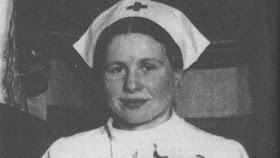 |
| Irena Sendler. |
Irena Sendler was a Catholic Polish nurse and social worker in Warsaw during World War II who led a secret life. Unknown to the authorities, Irena was the head of the children's section of Żegota, an underground resistance organization. She created a network to smuggle Jewish children, who faced the possibility of extermination, out of Occupied Warsaw. It is estimated that she saved 2500 children. Irena maintained a meticulous list of the children's names for purposes of later reuniting them with their families. The children were sent to Christian religious orphanages to be placed with Polish families.
In 1943, Irena was arrested by the Gestapo and, after being beaten and imprisoned, was taken to be executed. While being transported to her place of execution, she escaped - a sympathetic co-worker had bribed the guards. Irena resumed her nursing duties under an assumed name and survived the war. Sendler was recognized by Yad Vashem as one of the Polish Righteous Among the Nations in 1965. She also received numerous other awards, including by the United States Congress. Irena Sendler passed away in 2008. There are plans to make a motion picture about her life.
Father Franz Stock
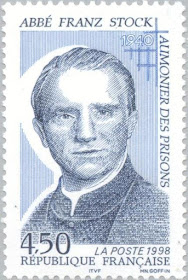 |
| Father Franz Stock. |
Franz Stock was a German Catholic Priest who had studied for the priesthood in Paris and stayed there. During the Occupation, Father Stock was given special permission by the German ambassador to Vichy, France, to minister to imprisoned French men and women. This apparently was due to his German heritage, which made him unique. Father Stock helped the imprisoned people in small ways, such as communicating for them with their families and warning them about what the Gestapo - based on his access to Gestapo files - was looking for during interrogations. He later had to watch as these people were executed, accompanying them and giving them the Last Rites. He performed a unique, valuable, and comforting service to many people that often exposed him to danger.
After the Liberation, Father Stock was imprisoned along with all other captured Germans. He performed his priestly duties for his fellow German prisoners. Father Stock was allowed to organize a secret seminary in his prison camp in order to aid in Germany's rehabilitation. This project was a success despite the indifference and outright hostility from the public and many authorities - both religious and civic - toward German POWs. This project took off, and over 600 of the POWs later became ordained priests. Father Stock passed away in 1948 in part from mistreatment and deprivations suffered as a result of the war.
Father Stock greatly helped with reconciliation between France and Germany. On the fiftieth anniversary of Father Stock's death, German Chancellor Helmut Kohl visited his tomb at Chartres, while on the sixtieth anniversary, French President Nicolas Sarkozy marked the occasion with a ceremony at Mont Valérien where Stock had performed many duties for prisoners. The process of the beatification of Father Stock is ongoing.
 |
| Unknown rescue worker rescuing a cat. |
Josef Schulz
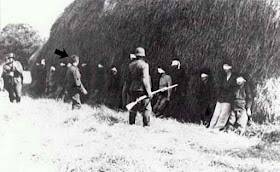 |
| Wehrmacht soldier Josef Schulz walks toward the line. |
There are issues of proof with this story, but many accept it as true. A young German soldier (pictured center left, without a helmet) refused to participate in the execution of 16 Yugoslav civilians in 1941. He dropped his rifle and positioned himself within the group. He was executed along with the civilians for disobeying his NCO and buried with them. The man chose death instead of killing helpless civilians. You can't do any more than give your life. His name apparently (this is disputed) was Josef Schulz.
 |
| Unknown rescue worker holding a cat. |
Life goes on, and saving something from the ruins is special. It is not glorious work, and nobody remembers them, but rescue workers deserve mention. These folks - heroes.
Armin Wegner
 |
| Armin Wegner. |
Armin Theophil Wegner (October 16, 1886 – May 17, 1978) was a WWI German medic who photographed and documented the Armenian Genocide by the Turks in 1914-1916, Later, he was persecuted by the Germans in WWII for his condemnation of antisemitism. In 1933, he authored an impassioned plea to Adolf Hitler on behalf of the Jews of Germany. He was not Jewish - what business, most people would ask, was it of his? He considered it his business.
He was there at the beginning when it counted, and he instantly and loudly protested. If others had joined him, things might have been different - but they didn't. What more can you do? His wife divorced him just before the war because of his protests. He wound up in a succession of concentration camps during the war, including the notorious Oranienburg. Somehow, he survived. He died forgotten, though his memory has been honored at times since then.
Like so many other heroes, Wegner was no Saint. He just tried to do the right thing at his own personal cost. Ultimately, Wegner was declared Righteous Among the Nations by Israel. That's good enough for me.
Anne Frank (and family)
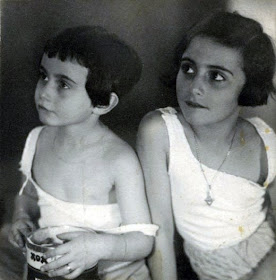 |
| Anne and Margot Frank in 1933. |
 |
| Anne Frank, just before the war. |
The Franks - they've gotten tons of publicity since their father discovered Anne's hidden diary. You undoubtedly know the story about how they were ordinary folks who hid out for most of the war in a tiny attic until betrayed by someone who never has been identified. All the publicity doesn't make them more or less of heroes - they simply are heroes. Let's use them as stand-ins for the millions of people killed in the Holocaust. They're all heroes.
Claus von Stauffenberg
 |
| Claus von Stauffenberg. |
Claus von Stauffenberg. Everybody knows about Stauffenberg. Movies have been made about him, such as the Tom Cruise film "Valkyrie," and he remains one wartime figure Germans can point to with pride. He, to a tiny extent, redeemed some German honor during World War II. His motives for trying to kill Hitler were a bit murky, but he actually did what everybody else was afraid to do. Every concentration camp victim wishes they could have done what Stauffenberg actually tried to do. What he did was the right thing to do times ten, and he belongs here.
Stjepan Filipović
 |
| Stjepan Filipović. |
Stjepan Filipović was a Croatian Partisan who fought against Axis forces during WWII. Here he is, moments before his own execution. Moments before dying, he threw his arms into the air and yelled, ”Death to fascism, freedom to the people!” Valjevo, Yugoslavia - May 22, 1942. You won't find him in any other list of heroes. He is completely unknown, completely forgotten, a nobody from nowhere. Let him be the stand-in for all the unknown partisans who helped others behind the lines. He belongs here.
George Elser
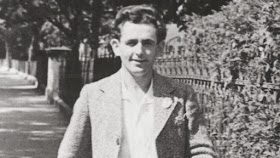 |
| George Elser. |
During Adolf Hitler's reign, there were two assassination attempts that worked as planned. One was the famous 20 July 1944 bomb plot by Claus Philipp Maria Schenk Graf von Stauffenberg, which is mentioned elsewhere here. The other was carried out by a "lone wolf" attacker on
8 November 1939 at the Bürgerbräukeller in Munich. This second, less known attack, was undertaken by George Elser, a factory worker who felt that Hitler was the "downfall of Germany." He planted a bomb in a pillar near the speaker's platform in the Bürgerbräukeller, where Hitler gave annual speeches in honor of his failed 1923 Putsch attempt. The bomb exploded, but Hitler left early and he was not in the building when it went off.
The Gestapo arrested Elser as he tried to escape across the Swiss border at Konstanz. He confessed that "getting rid of Hitler just became an obsession of mine." The Gestapo held Elser in concentration camps for over five years before executing him on 9 April 1945.
Major Gen. Herman "Henning" von Tresckow
 |
| Major Gen. Herman "Henning" von Tresckow. |
Claus von Stauffenberg did not act alone - he was more or less the triggerman, not the architect, of the plot to kill Hitler. Major Gen. Herman "Henning" von Tresckow was the prime mover behind the plot to assassinate Hitler on July 20, 1944. Originating from an old aristocratic Prussian family, Tresckow was an early anti-Hitler plotter who never gave up trying to find a way to do away with Hitler. He was well known in resistance circles as the brains behind the whole deal. His organization actually tried several times to kill Hitler, but each time, the dictator was saved "by the Devil's hand."
Tresckow himself tried to kill Hitler directly by hiding bombs in two bottles of wine that he off-handedly asked someone flying with Hitler to carry for him back to Berlin. As Hitler returned back home after visiting with Army Group Center - his very last visit there, in 1943 - the bombs failed to detonate. The story is chilling in how close it came to succeeding, and it also makes one wonder whether some of the other airplane crashes that killed bigwigs like Werner Molders and Hans Hube were actually accidents or not. History would have been vastly different had he succeeded. In any event, Tresckow failed as a triggerman, so he had to find someone else. That man was von Stauffenberg, who Tresckow managed to get appointed to a key staff position in Berlin with responsibilities that included direct reports to Hitler himself. That set up Tresckow's final attempt to kill Hitler.
When the final July 1944 bomb plot failed, Tresckow knew it was all over. Hitler finally was on to his organization in a big way, and he could count on someone betraying him eventually. While serving with his unit in occupied Poland, Tresckow committed suicide by exploding a hand grenade under his chin. He gave up everything to try and do the right thing, and German soldier, Jew or Gypsy, that's all anyone can do. There were others like him who also were good at planning things out and organizing assassination attempts, but they all needed someone willing to get his hands dirty like von Stauffenberg and actually do the deed. You do need both - planners/organizers, and effective executioners. Tresckow did his best, despite his failure.
Hannah Szenes
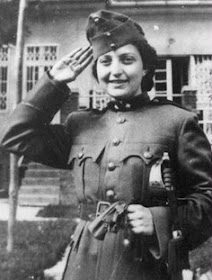 |
| Hannah Szenes. |
 |
| Another photo of Hannah Szenes. |
Hannah Szenes was a Hungarian Jewish resistance fighter. She enlisted in the British Army and volunteered for service behind the lines in Europe. They trained her to parachute into occupied Yugoslavia, which was largely controlled by the Italians. After spending three months with Tito's partisans in Yugoslavia, she crossed into Hungary at the height of the deportation of Jews on May 13, 1944. The Hungarian Jews were about to be deported to Auschwitz.
Denounced by locals, Szenes quickly was arrested at the border by the Hungarian police and severely tortured. Despite her torture, she kept the details of her mission secret. During a "trial" in October 1944, she defended her actions but was sentenced to death. Szenes was executed by firing squad shortly thereafter. Not widely known in the West, Szenes is widely regarded by Palestinian Jews as one of Israel's national heroes.
Violette Szabo
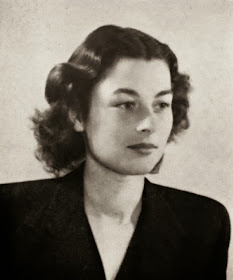 |
| Violette Szabo. |
Violette Szabo was a French-British secret agent. She performed undercover missions in occupied France. Captured after a gun battle at a German checkpoint by the SS Panzer Division Das Reich near Salon-la-Tour, she wound up in the women's concentration camp,
Ravensbruck. Violette Szabo was executed by firing squad on February 25, 1945. She was 23.
Polish Resistance Fighters
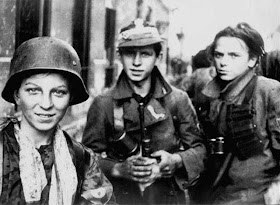 |
| Unknown Polish Resistance Fighters. |
You don't need to have a remembered name to be recognized as a hero. The Polish resistance rose up in Warsaw during the summer of 1944 when they heard that the Soviets basically were just across the river. Maybe it would take a few days, maybe a week - but the Soviets would come to their rescue, right? Wrong. The Soviets were strung out with tenuous supply lines stretching hundreds of miles, while the Germans were bringing up the last of their reinforcements. The Germans in fact sent in some of the most sadistic killers who ever wore a uniform. It took five months before the Soviets actually crossed the river and took Warsaw in January 1945. That was about three months too late for these doomed resistance fighters.
Desmond Doss
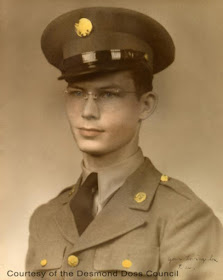 |
| Desmond Doss. |
Desmond Doss was a medic with the 2nd Platoon, Company B, 1st Battalion, 307th Infantry, 77th Infantry Division, of the United States Army. He sought the position of medic due to his classification as a conscientious objector based upon his religious beliefs. Doss showed extreme valor in tending to wounded soldiers while under fire on Guam, Okinawa, and the Philippines. It is estimated that Doss saved over 50 lives at Hacksaw Ridge on Okinawa. After being wounded for the fourth time, Doss was evacuated from Okinawa on 21 May 1945. He later received two Bronze Stars and the Medal of Honor from President Harry Truman. Unfortunately, Doss suffered from permanent debilitating war wounds, including loss of hearing, though the hearing loss was later corrected with new technology. After passing away on 23 March 2006, Desmond Doss was buried in the National Cemetery in Chattanooga, Tennessee.
Raoul Wallenberg
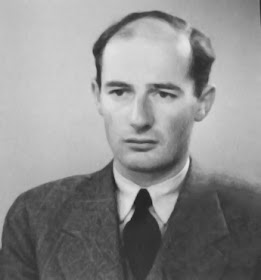 |
| Raoul Wallenberg - just another guy in a suit. Or maybe not. |
Raoul Wallenberg (August 4, 1912 – July 17, 1947?) was a Swedish architect, businessman, diplomat, and humanitarian. He is widely celebrated for his successful efforts to rescue tens of thousands - maybe one hundred thousand - Jews in German-occupied Hungary during the Holocaust. Hungarian Fascists and the SS were bloodthirsty during the later stages of World War II, but Wallenberg outwitted them.
While serving as Sweden's special envoy in Budapest between July and December 1944, Wallenberg issued protective passports and sheltered Jews in buildings designated as Swedish territory. Wallenberg quite possibly saved more lives than any other man in history. Think about that.
Wallenberg is famous, but not quite "Schindler" famous, despite saving more lives than the German businessman. The difference probably lies in Schindler having saved lots of "connected" figures, while Wallenberg saved mostly anonymous peasants who perhaps didn't even know who was saving them. Wallenberg also didn't live to cement his deeds in peoples' minds after the war.
As with many, many, many heroes of World War II, Wallenberg received no accolades during his lifetime, or, at least none that he could have known about. Nobody later made a splashy movie about him, either. He was just some guy in a suit who had no business getting involved at all but did what he could for the sole reason that it was the right thing to do.
The Soviets completely encircled Budapest by Christmas 1944, and Wallenberg was trapped along with everyone else. All German relief attempts failed, and the city finally fell in February 1945. Well, no problem for such a wonderful guy whom the Soviets would probably decorate with their highest honors, right? Wrong. For his troubles, Wallenberg is believed to have been tortured to death by the Soviets in post-war captivity - though nothing ever has been confirmed. Why would the Soviets be upset at Raoul Wallenberg, an inoffensive diplomat from a neutral nation? You'd have to ask them.
For what it's worth, Raoul Wallenberg was named Righteous Among the Nations by Israel. He has been given (most likely posthumous) citizenship by numerous nations around the world, including by the U.S. No earthly honor would be enough to properly recognize what Raoul Wallenberg accomplished.
2020






























